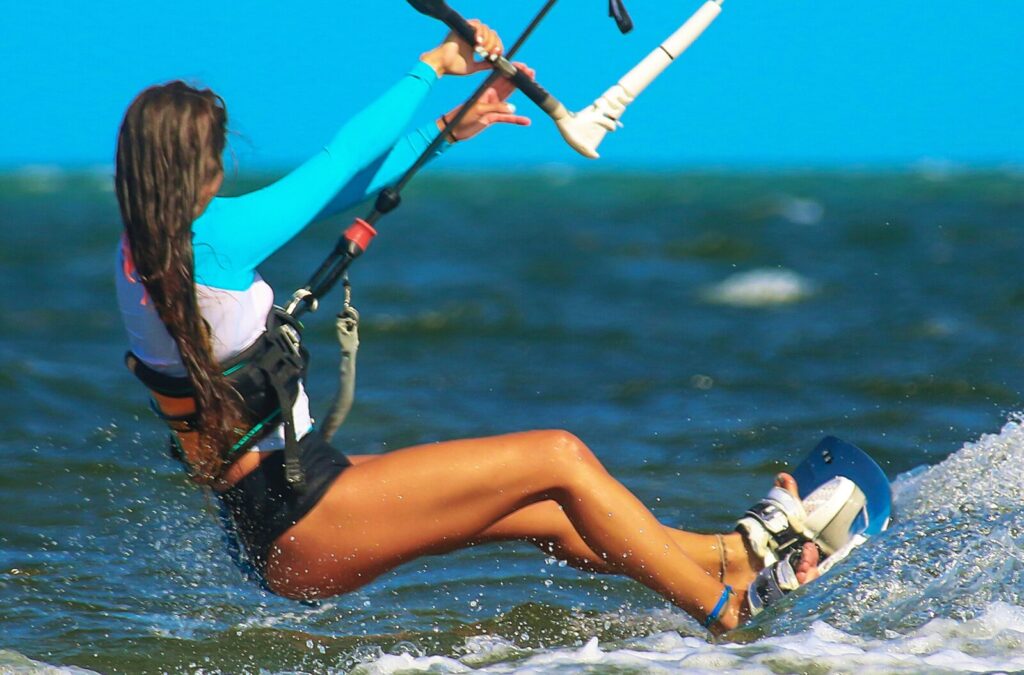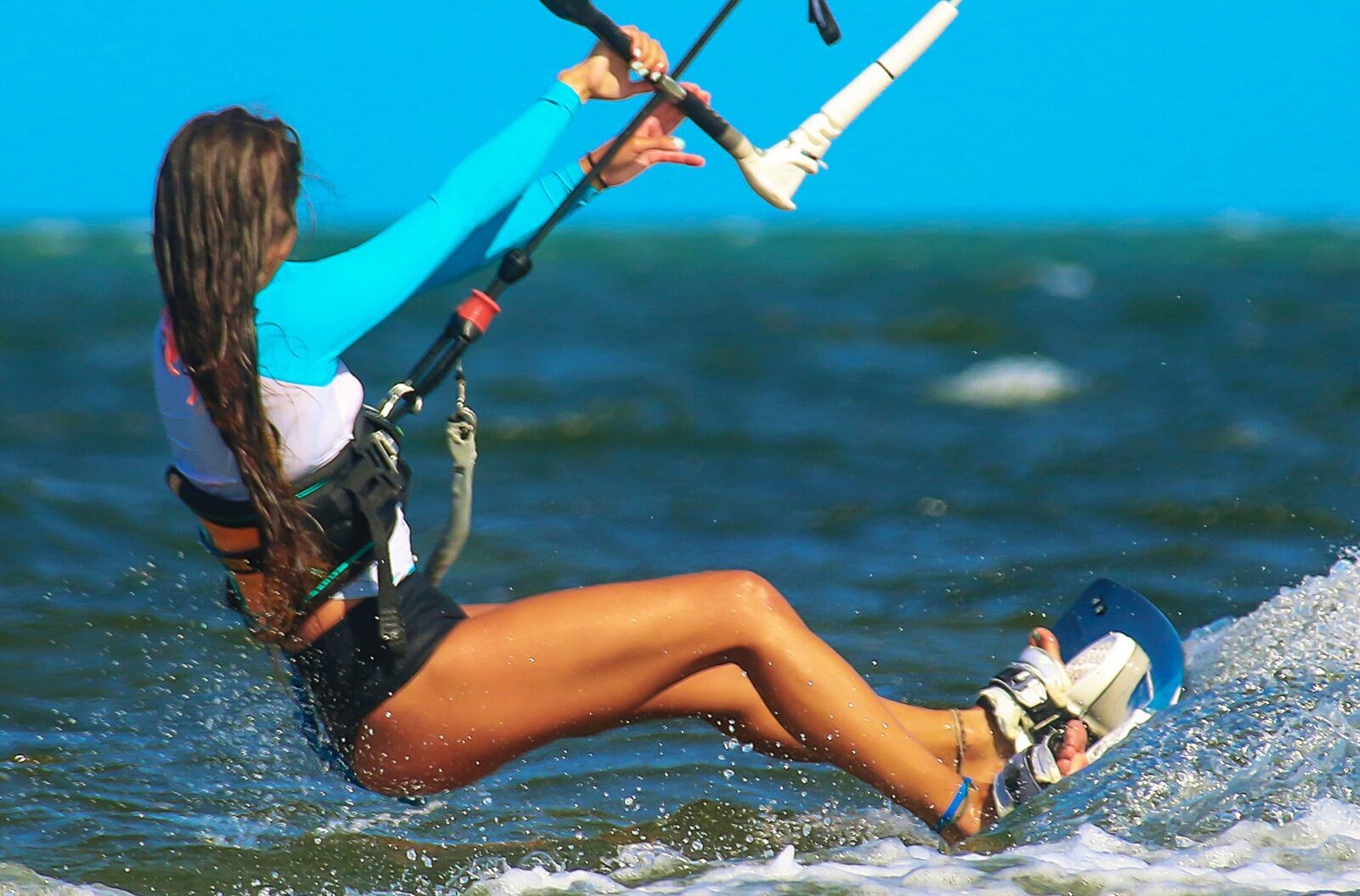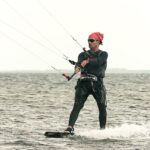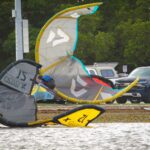
Safety Tips for Kitesurfing Beginners.
Safety Tips for Kitesurfing Beginners.
Kitesurfing is an exhilarating sport that combines the power of the wind with the thrill of surfing. If you want to get started in kitesurfing, this comprehensive guide is a great place to begin.
From choosing the right kite and board to learning the basics of kitesurfing, this guide will provide you with all the information you need to get up and ride in no time. With the right gear and a few helpful tips, you’ll be ready to take on the waves and experience the joy of kitesurfing.
Kitesurfing is an exhilarating water sport that is growing in popularity all over the world. It combines elements of surfing, wakeboarding, and paragliding and is a great way to get out on the water and have fun.
But like any other sport, kitesurfing comes with inherent risks, and beginners must take the necessary safety precautions to stay safe while on the water. Here are some safety tips for kitesurfing beginners to keep in mind:
1. Get Proper Training: Kitesurfing is a complex sport that requires a good understanding of the fundamentals, so getting proper training from a qualified instructor is essential. Taking a kitesurfing lesson will help you learn the basics of the sport, as well as how to stay safe while you’re out on the water.
2. Wear a Life Jacket: A life jacket is an essential piece of safety equipment for any kitesurfer, regardless of skill level. Make sure to wear a properly fitting life jacket at all times when you’re out on the water.
3. Use the Right Equipment: Ensure you use the right equipment for your skill level. If you’re a beginner, it’s essential to use a kite that is designed for beginners, as well as a board that is suitable for your weight and size.
4. Know the Weather Conditions: Before you head out on the water, check the weather conditions and make sure they are suitable for kitesurfing. Staying on land is best if the wind is too strong or the waves are too high.
5. Be Aware of Other Watercraft: Make sure you know other watercraft in the area, such as boats, jet skis, and other kitesurfers. Keep a safe distance from them and be aware of their movements.
6. Have a Spotter: If you’re a beginner, it’s a good idea to have a spotter who can help you if you get into trouble. A spotter can also help you launch and land your kite safely.
7. Be Prepared for Emergencies: Ensure you’re prepared for emergencies while on the water. Have a plan for what to do if you get into trouble, and make sure you have a way to contact help if needed.
By following these safety tips, kitesurfing beginners can stay safe and have a great time out on the water. Always use the right equipment, get proper training, and be aware of your surroundings while on the water. Have fun, and stay safe!
Understanding Kitesurfing Equipment.
Kitesurfing is an exhilarating and popular watersport that has grown in popularity over the years. It combines surfing, windsurfing, and wakeboarding and requires specialized equipment.
To get the most out of your kitesurfing experience, it is essential to understand the different types of kitesurfing equipment and how they work together.
Kitesurfing equipment comprises a kite, a board, a harness, and lines. The kite is the most critical equipment, as it powers the kitesurfer. Kites come in various shapes and sizes, and the size and type of kite you need will depend on the wind conditions and your preference. The board is the platform that the kitesurfer stands on, and it can be either a directional or twin-tip board.
The harness connects the kitesurfer to the kite, and it helps to distribute the kite’s power evenly across the body. Finally, the lines are the ropes that connect the kite to the harness and the board.
When setting up your kitesurfing equipment, it is essential to ensure all components are correctly connected and adjusted. The kite should be connected to the harness with the lines, and the lines should be adjusted to the correct length. The board should be securely attached to the saddle, and the lines should be adjusted to the proper tension.
Kitesurfing is an exciting and challenging sport; having the right equipment is essential for a successful and safe experience. Understanding the different types of kitesurfing equipment and how they work together is the key to getting the most out of your kitesurfing experience. With the proper knowledge and equipment, you can enjoy the thrill of kitesurfing and make the most of your time on the water.
Kitesurfing Basics: Learning the Basics.
Kitesurfing is an exhilarating sport that has been gaining popularity over the years. It combines the elements of surfing, windsurfing, and wakeboarding to create an adrenaline-filled experience.
If you want to get into kitesurfing, the first step is learning the basics.
Kitesurfing requires a kite, a board, and a harness. The kite is a large, lightweight sail connected to the rider via a control bar. The board is a surfboard-like structure that the rider stands on while riding the waves. The harness is a waist belt that connects the rider to the kite.
Before you can begin kitesurfing, you need to learn the basics of kite control. This includes knowing how to launch and land the kite, control the kite in the air, and turn the kite. It would help if you also learned how to read the wind and weather conditions and how to choose the right kite size for the requirements.
Once you’ve mastered the basics of kite control, you can move on to learning how to ride the waves. This includes knowing how to control the board, how to turn, and how to jump. You’ll also need to learn how to use the wind and the waves to your advantage.
Finally, you’ll need to learn safety techniques. This includes knowing how to stay safe in the water, self-rescue, and recognize and avoid dangerous situations.
Learning the basics of kitesurfing can be daunting, but with the correct instruction and practice, you can become a proficient kitesurfer in no time. Once you’ve mastered the basics, you can move on to more advanced techniques and start enjoying the thrill of kitesurfing.
Kitesurfing Locations: Finding the Best Spots.
Kitesurfing is an exciting and thrilling water sport that combines the wind’s power with the waves’ power. It’s a great way to get out on the water and enjoy the fresh air and the feeling of freedom that comes with it.
But you must find the best locations to get the most out of your kitesurfing experience.
The best kitesurfing locations will depend on your skill level and what type of kitesurfing you’re looking to do. Beginners should look for spots with shallow water and consistent wind, while more experienced kitesurfers can explore more challenging locations with more giant waves and stronger winds.
The type of kitesurfing you’re looking to do will also influence your choice of location. Freestyle kitesurfing, for example, requires more giant waves and stronger winds, while wave riding is best done in spots with more consistent wind and smaller waves.
Kitesurfing Techniques: Mastering the Basics.
Kitesurfing is an exciting sport that has been gaining popularity in recent years. It combines the thrill of surfing with the power of a kite, allowing you to experience the freedom of the open ocean and the challenge of mastering the elements.
Kitesurfing techniques are the foundation of this sport, and mastering the basics is essential for a successful and safe kitesurfing experience. The basics of kitesurfing include:
- Launching and landing the kite.
- Controlling the kite, body dragging.
- Water relaunching.
Launching and landing the kite is the first step in kitesurfing. Ensuring the kite is appropriately set up, and the lines are not tangled is essential. Once the kite is set up, it can be launched by using the wind to fill it and lift it into the air. The kite should be flown in a figure 8 pattern to ensure it is adequately inflated and stable. Landing the kite is just as important as launching it and should be done in a controlled manner.
Controlling the kite is the next step in kitesurfing. The kite should be flown in a figure 8 pattern to ensure that it is stable and can be maintained. The kite can be controlled by using the bar to pull the kite in different directions. This will allow the kite to move up and down, side to side, and turn in different directions.
Body dragging is the next step in kitesurfing. This is when the kite pulls the rider through the water. The kite should be flown in a figure 8 pattern to ensure that it is stable and can be controlled. The rider should lean back and use the bar to pull the kite in different directions to move through the water.
Water relaunching is the last step in kitesurfing. This is when the kite is used to relaunch the rider from the water. The kite should be flown in a figure 8 pattern to ensure that it is stable and can be controlled. The rider should lean back and use the bar to pull the kite in different directions to relaunch it from the water.
Kitesurfing techniques are the foundation of this sport, and mastering the basics is essential for a successful and safe kitesurfing experience. These techniques can be learned with practice and dedication, and you can experience the freedom and thrill of kitesurfing.
Kitesurfing is an exciting and rewarding sport that beginners and experienced riders alike can enjoy. Anyone can become a kite surfer with the right equipment, knowledge, and practice. This comprehensive guide to getting started in kitesurfing has provided the information you need to begin your journey into the sport. From choosing the right kite and board to understanding the basics of kite control and safety, this guide has given you the tools to make your kitesurfing experience enjoyable and successful. So, get out there and enjoy the thrill of kitesurfing!
Excerpt.
Kitesurfing is an exciting and rewarding sport that anyone with the proper knowledge and equipment can enjoy. This guide provides an overview of the basics, from choosing the right kite and board to launching and landing safely. With this comprehensive guide, you’ll be ready to get out on the water and start kitesurfing in no time.
Author
Latest entries
 WatersportsMay 10, 2023Qatar GKA Freestyle Kite World Cup, Fuwairit Kite Beach, Qatar: 31 January – 04 February – 2023
WatersportsMay 10, 2023Qatar GKA Freestyle Kite World Cup, Fuwairit Kite Beach, Qatar: 31 January – 04 February – 2023 WatersportsMarch 30, 2023Seven Navigation Tips That All Kite Surfers Should Know.
WatersportsMarch 30, 2023Seven Navigation Tips That All Kite Surfers Should Know. WatersportsMarch 30, 2023Why Safety First is the Most Important Aspect of Kitesurfing.
WatersportsMarch 30, 2023Why Safety First is the Most Important Aspect of Kitesurfing. WatersportsMarch 30, 2023Tips to Improve Your Body Drag Skills in Kitesurfing.
WatersportsMarch 30, 2023Tips to Improve Your Body Drag Skills in Kitesurfing.




